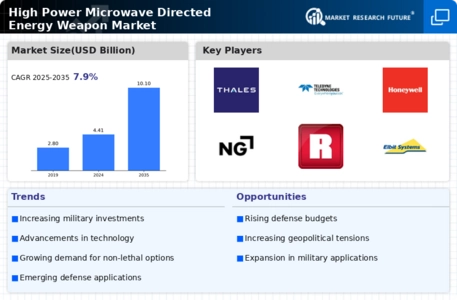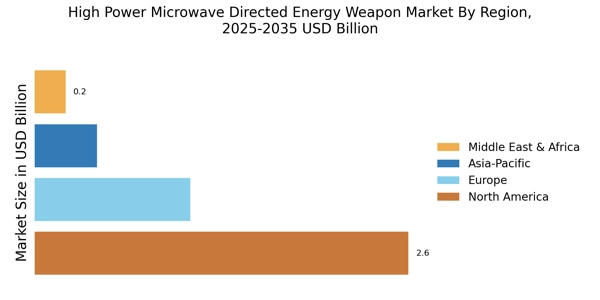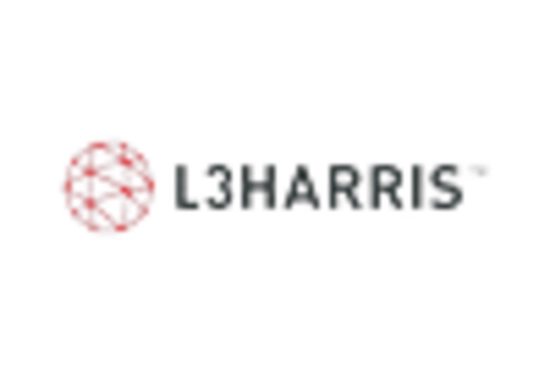Increased Defense Budgets
The High Power Microwave Directed Energy Weapon Market is benefiting from increased defense budgets across various nations. Governments are prioritizing the modernization of their military capabilities, leading to substantial investments in advanced weaponry, including directed energy systems. This trend is particularly evident in countries facing emerging threats, where high power microwave weapons are seen as essential for maintaining strategic superiority. Recent reports indicate that defense spending is expected to rise by an average of 3-5% annually, with a significant portion allocated to research and development of directed energy technologies. This influx of funding is likely to accelerate the deployment of high power microwave systems, further solidifying their role in contemporary military strategies.
Growing Geopolitical Tensions
The High Power Microwave Directed Energy Weapon Market is influenced by growing geopolitical tensions that drive nations to enhance their military capabilities. As regional conflicts and power struggles intensify, countries are increasingly investing in advanced weapon systems to deter adversaries and protect national interests. High power microwave weapons, with their ability to disable enemy assets without causing extensive damage, are becoming a focal point in defense strategies. This trend is particularly pronounced in areas with heightened military activity, where the need for effective deterrence is critical. Analysts suggest that the market could see accelerated growth as nations seek to bolster their defense postures in response to evolving threats and uncertainties in the international landscape.
Shift Towards Non-Lethal Solutions
The High Power Microwave Directed Energy Weapon Market is witnessing a notable shift towards non-lethal solutions in military operations. As armed forces seek to minimize collateral damage and civilian casualties, high power microwave weapons offer a viable alternative to traditional munitions. These systems can disable enemy electronics and vehicles without causing permanent harm, aligning with modern warfare's evolving ethical standards. This shift is particularly relevant in urban combat scenarios, where precision and restraint are paramount. The market is likely to expand as defense agencies recognize the strategic advantages of non-lethal options, with projections indicating a growing segment of the market dedicated to non-lethal directed energy systems. This trend reflects a broader commitment to responsible military engagement.
Emerging Applications in Civilian Sectors
The High Power Microwave Directed Energy Weapon Market is exploring emerging applications beyond military use, particularly in civilian sectors. High power microwave technology is being investigated for various purposes, including crowd control, perimeter security, and even wildlife management. These applications leverage the non-lethal nature of microwave weapons, providing effective solutions for law enforcement and security agencies. As public safety concerns rise, the potential for high power microwave systems to serve in civilian roles is likely to expand. This diversification may open new revenue streams for manufacturers and contribute to the overall growth of the market. Projections indicate that the civilian applications segment could account for a notable share of the market in the coming years.
Technological Advancements in Directed Energy Weapons
The High Power Microwave Directed Energy Weapon Market is experiencing rapid technological advancements that enhance weapon capabilities. Innovations in microwave technology, such as improved power efficiency and miniaturization, are driving the development of more effective systems. These advancements enable military forces to deploy high power microwave systems in various operational environments, increasing their tactical versatility. Furthermore, the integration of advanced targeting systems and artificial intelligence is likely to improve the accuracy and effectiveness of these weapons. As nations invest in research and development, the market is projected to grow significantly, with estimates suggesting a compound annual growth rate of over 10% in the coming years. This trend indicates a robust demand for advanced directed energy solutions in defense applications.


















Leave a Comment